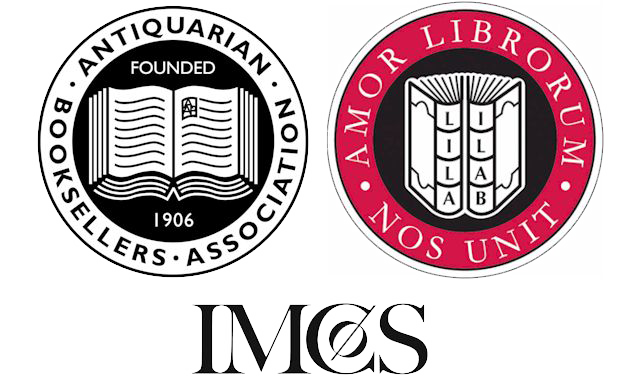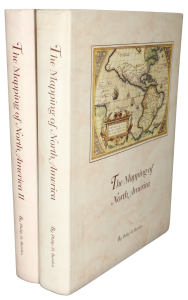Rare Maps and Prints
- World & Celestial
- North America
- West Indies, South & Central America
- British Isles
- British Isles
- English counties
- Large-scale
- Bedfordshire
- Berkshire
- Buckinghamshire
- Cambridgeshire
- Cheshire
- Cornwall
- Cumberland
- Derbyshire
- Devon
- Dorset
- Durham
- Essex
- Gloucestershire
- Hampshire
- Herefordshire
- Hertfordshire
- Huntingdonshire
- Islands
- Kent
- Lancashire
- Leicestershire
- Lincolnshire
- Middlesex
- Norfolk
- Northamptonshire
- Northumberland
- Nottinghamshire
- Oxfordshire
- Rutland
- Shropshire
- Somerset
- Staffordshire
- Suffolk
- Surrey
- Sussex
- Warwickshire
- Westmoreland
- Wiltshire
- Worcestershire
- Yorkshire
- Wales
- Scotland
- Ireland
- Western Europe
- Eastern Europe
- Middle East
- Africa
- Asia
- Australasia & Pacific
- Decorative Prints
- Title Pages
Mr. Philip D. Burden
P.O. Box 863,
Chalfont St. Giles, Bucks HP6 9HD,
UNITED KINGDOM
Tel: +44 (0) 1494 76 33 13
Email: enquiries@caburden.com
An extremely rare SEPARATELY PUBLISHED BROADSIDE advertising land for sale in the city by George Walker of which only two other examples could be traced. President George Washington employed the services of Pierre Charles L’Enfant (1754-1825) to layout a planned capital city on the shores of the Potomac River. At a meeting of the Commissioners in September 1791 a letter was written to L’Enfant in which it was stated ‘We have agreed that the federal district shall be called the ‘Territory of Columbia’ and the federal city ‘The City of Washington’.
This example was presented by Dr. William Thornton, architect of the Capitol Building and Commissioner for the City’s development from 1794-1802, to Constantin Francois de Chasseboeuf, Comte de Volney (1757-1820). Volney was a French philosopher and historian whose ‘Ruins of Empires’ was largely translated secretly by Thomas Jefferson. It was Jefferson who inducted him into the American Philosophical Society. On arrival in America in 1795 he was warmly received by President Washington who like Thomas Jefferson was an admirer of France. Their political rival John Adams however distrusted them. ‘The French were becoming even more ruthless towards Americans at sea than had been the British – no other country totally accepted the United States as a viable entity, and both Britain and France still believed they were entitled to most of North America. Many in both countries considered the American experiment would fail’ (Graye). Upon becoming President, John Adams’ suspicions about Volney increased although there is no evidence to support this. There are ten surviving letters between Thornton and Volney which relate their close friendship. Thornton aware of his position in Washington had to tread a careful line.
Jefferson’s political rival President Adams accused him of being a French spy, Volney left the country in 1798 to return to France. The results of his travels (1795-98) were published as ‘Tableau du Climat et du Sol des Etats-Unis’ published in 1803, the first work on the climate of the United States. On leaving, this and a collection of American printed maps of the States were presented as a gift by Thornton to Volney. ‘Presented to Mr Volney the 9th of February 1798 by Wm. Thornton commissioner to the public Buildings’ is written in his hand near the title of the plan of Washington included in the gift.
This extremely rare broadside by George Walker (c.1752-c.1817) we believe to be only the third example to be discovered (full ANB entry below). Walker was born in Scotland and by 1785 was in Georgetown, Maryland, as an agent for a Scottish firm trading in tobacco and dry goods. Quickly achieving prominence in town by 1789 he was advocating locating the new capital of the United States on land south east of Georgetown as an ideal location. ‘Walker first published his ideas on the subject in the ‘Maryland Journal’ on 23 January 1789. In the article, he proposed siting the federal city on some 6,000 acres lying between Rock Creek and the Anacostia River, the same site that Washington selected two years later … In June [1791] he purchased a 358-acre tract in the eastern sector of the city and moved there. For the next four years Walker threw his outgoing personality and considerable energy behind the city’s success, acting as its primary publicist’ (American National Biography). ‘In February 1792, when the relationship between L’Enfant and the commission reached a breaking point over the issues of artistic freedom and who was to supervise L’Enfant, Washington turned to Walker to resolve the conflict. Walker was unsuccessful, and Washington fired L’Enfant at the end of the month’ (ANB).
The first description of the city was published in the ‘Maryland Journal’ on 30 September 1791 which was signed ‘A Spectator’. The second separate publication describing the city is this broadside of which Philip Lee Phillips, writing in 1917 stated the Library of Congress copy, only recently discovered, was the only one known. Since then the John Carter Brown Library has acquired one, quite possibly that offered for sale in New York in 1964. ‘In a letter from George Washington, written on 30 November 1792 and published in the Records of the Columbia Historical Society, vol. 17, he says ‘Mr. George Walker, who is in this city, informs me that he shall sail for Scotland about the first of January’. This is evidently the author of the broadside given above, and the same who was closely identified with Washington, and an owner of property when the city was in embryo’ (Phillips).
Walker would spend his time promoting the new city and in March published this broadside. In July he re-wrote it and published it in the ‘Universal Magazine of Knowledge and Pleasure’ along with a plan of the city. In our example of the broadside one of the final words is replaced in manuscript. The last line refers to the project as being a ‘novel undertaking’, this is replaced with ‘important undertaking’. The imprint he provides is ‘George Walker, London, York Hotel, Bridge-street, Black-friars, March 12, 1793’.
There are just two known examples of the broadside: LC (Call number Portfolio 197, Folder 20) fold-lined and mounted on cloth backing; John Carter Brown Library (Call number MD8-12). Another example was placed for sale by Parke-Bernet in New York in 1964 (sale 2258 lot 289) but was unsold, it was mounted on card with cloth edging. This might well be the JCB example.
Provenance: acquired 15 May 1984; Burden Collection. ANB, American National Biography; Burr, Nelson R. (1972) ‘The Federal City Depicted 1612-1801, in ‘A La Carte. Selected Papers on Maps and Atlases’ pp. 126-52; ESTC N49707; Goff, Frederick R. (1972). ‘The Federal City in 1793’, in ‘A La Carte. Selected Papers on Maps and Atlases’. Washington: Library of Congress. pp. 144-52; Goode, James M. (2015) ‘The Evolution of Washington, D.C. Historical Selections from the Albert H. Small Washingtonia Collection at the George Washington University’; Graye, Michelle (2014) ‘Thomas Jefferson’s Washington Architect: William B. Thornton’, Monticello West pp. 196-7; Harris, Charles M. (2015) ‘William Thornton (1759-1828) Library of Congress https://www.loc.gov/rr/print/adecenter/essays/B-Thornton.html; Padover, Saul K. (ed.) (1946) Thomas Jefferson and the National Capital 1783-181’; Phillips (1917) ‘The Beginnings of Washington’ pp. 14-38; Reps (1967) 1-27; Reps (1972) pp. 251-61; Ristow (1995) pp. 117, 246-8; Stephenson, Richard W. (2014) ‘From L’Enfant to the Senate Park Commission: Mapping the Nation’s Capital from 1791 to 1902’ Occasional Paper Series no. 6, Philip Lee Phillips Map Society Publication.
This example was presented by Dr. William Thornton, architect of the Capitol Building and Commissioner for the City’s development from 1794-1802, to Constantin Francois de Chasseboeuf, Comte de Volney (1757-1820). Volney was a French philosopher and historian whose ‘Ruins of Empires’ was largely translated secretly by Thomas Jefferson. It was Jefferson who inducted him into the American Philosophical Society. On arrival in America in 1795 he was warmly received by President Washington who like Thomas Jefferson was an admirer of France. Their political rival John Adams however distrusted them. ‘The French were becoming even more ruthless towards Americans at sea than had been the British – no other country totally accepted the United States as a viable entity, and both Britain and France still believed they were entitled to most of North America. Many in both countries considered the American experiment would fail’ (Graye). Upon becoming President, John Adams’ suspicions about Volney increased although there is no evidence to support this. There are ten surviving letters between Thornton and Volney which relate their close friendship. Thornton aware of his position in Washington had to tread a careful line.
Jefferson’s political rival President Adams accused him of being a French spy, Volney left the country in 1798 to return to France. The results of his travels (1795-98) were published as ‘Tableau du Climat et du Sol des Etats-Unis’ published in 1803, the first work on the climate of the United States. On leaving, this and a collection of American printed maps of the States were presented as a gift by Thornton to Volney. ‘Presented to Mr Volney the 9th of February 1798 by Wm. Thornton commissioner to the public Buildings’ is written in his hand near the title of the plan of Washington included in the gift.
This extremely rare broadside by George Walker (c.1752-c.1817) we believe to be only the third example to be discovered (full ANB entry below). Walker was born in Scotland and by 1785 was in Georgetown, Maryland, as an agent for a Scottish firm trading in tobacco and dry goods. Quickly achieving prominence in town by 1789 he was advocating locating the new capital of the United States on land south east of Georgetown as an ideal location. ‘Walker first published his ideas on the subject in the ‘Maryland Journal’ on 23 January 1789. In the article, he proposed siting the federal city on some 6,000 acres lying between Rock Creek and the Anacostia River, the same site that Washington selected two years later … In June [1791] he purchased a 358-acre tract in the eastern sector of the city and moved there. For the next four years Walker threw his outgoing personality and considerable energy behind the city’s success, acting as its primary publicist’ (American National Biography). ‘In February 1792, when the relationship between L’Enfant and the commission reached a breaking point over the issues of artistic freedom and who was to supervise L’Enfant, Washington turned to Walker to resolve the conflict. Walker was unsuccessful, and Washington fired L’Enfant at the end of the month’ (ANB).
The first description of the city was published in the ‘Maryland Journal’ on 30 September 1791 which was signed ‘A Spectator’. The second separate publication describing the city is this broadside of which Philip Lee Phillips, writing in 1917 stated the Library of Congress copy, only recently discovered, was the only one known. Since then the John Carter Brown Library has acquired one, quite possibly that offered for sale in New York in 1964. ‘In a letter from George Washington, written on 30 November 1792 and published in the Records of the Columbia Historical Society, vol. 17, he says ‘Mr. George Walker, who is in this city, informs me that he shall sail for Scotland about the first of January’. This is evidently the author of the broadside given above, and the same who was closely identified with Washington, and an owner of property when the city was in embryo’ (Phillips).
Walker would spend his time promoting the new city and in March published this broadside. In July he re-wrote it and published it in the ‘Universal Magazine of Knowledge and Pleasure’ along with a plan of the city. In our example of the broadside one of the final words is replaced in manuscript. The last line refers to the project as being a ‘novel undertaking’, this is replaced with ‘important undertaking’. The imprint he provides is ‘George Walker, London, York Hotel, Bridge-street, Black-friars, March 12, 1793’.
There are just two known examples of the broadside: LC (Call number Portfolio 197, Folder 20) fold-lined and mounted on cloth backing; John Carter Brown Library (Call number MD8-12). Another example was placed for sale by Parke-Bernet in New York in 1964 (sale 2258 lot 289) but was unsold, it was mounted on card with cloth edging. This might well be the JCB example.
Provenance: acquired 15 May 1984; Burden Collection. ANB, American National Biography; Burr, Nelson R. (1972) ‘The Federal City Depicted 1612-1801, in ‘A La Carte. Selected Papers on Maps and Atlases’ pp. 126-52; ESTC N49707; Goff, Frederick R. (1972). ‘The Federal City in 1793’, in ‘A La Carte. Selected Papers on Maps and Atlases’. Washington: Library of Congress. pp. 144-52; Goode, James M. (2015) ‘The Evolution of Washington, D.C. Historical Selections from the Albert H. Small Washingtonia Collection at the George Washington University’; Graye, Michelle (2014) ‘Thomas Jefferson’s Washington Architect: William B. Thornton’, Monticello West pp. 196-7; Harris, Charles M. (2015) ‘William Thornton (1759-1828) Library of Congress https://www.loc.gov/rr/print/adecenter/essays/B-Thornton.html; Padover, Saul K. (ed.) (1946) Thomas Jefferson and the National Capital 1783-181’; Phillips (1917) ‘The Beginnings of Washington’ pp. 14-38; Reps (1967) 1-27; Reps (1972) pp. 251-61; Ristow (1995) pp. 117, 246-8; Stephenson, Richard W. (2014) ‘From L’Enfant to the Senate Park Commission: Mapping the Nation’s Capital from 1791 to 1902’ Occasional Paper Series no. 6, Philip Lee Phillips Map Society Publication.
WALKER, George
A Description of the Situation and Plan of the City of Washington, Now Building for the Metropolis of America, and Established as the Permanent Residence of Congress after the Year 1800
London, 1793
455 x 385 mm., wide margined with deckled edge, with one vertical and three horizontal folds, with corrections as noted below, in good condition.
Stock number: 9273
SOLD






